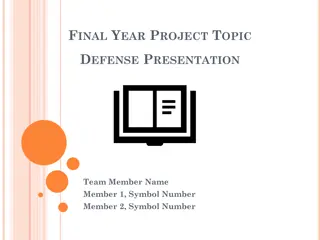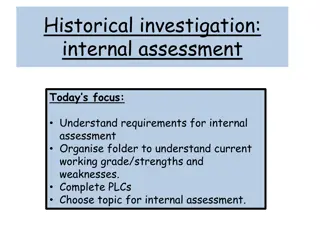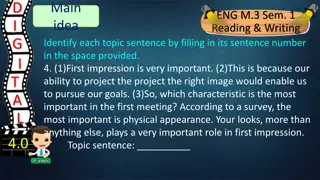
Calculating Total Factor Productivity: Methods and Case Study Guide
Learn how to measure Total Factor Productivity using the output/input ratio, including all necessary components in the equation. Follow a detailed case study on garden service productivity calculations for practical application. Enhance your understanding of productivity metrics and efficiency assessment.
Download Presentation

Please find below an Image/Link to download the presentation.
The content on the website is provided AS IS for your information and personal use only. It may not be sold, licensed, or shared on other websites without obtaining consent from the author. If you encounter any issues during the download, it is possible that the publisher has removed the file from their server.
You are allowed to download the files provided on this website for personal or commercial use, subject to the condition that they are used lawfully. All files are the property of their respective owners.
The content on the website is provided AS IS for your information and personal use only. It may not be sold, licensed, or shared on other websites without obtaining consent from the author.
E N D
Presentation Transcript
PERSONAL ASSISTANT L4 MALUTI TVET BETHLEHEM CAMPUS SJ MOFOKENG
PERSONAL ASSISTANT L4 TOPIC 5 MODULE 17
OVERVIEW At the end of this module you will be able to: Measure Total Factor Productivity using the output/input ratio. Include all output and input items in the equation.
Measuring Total Factor Productivity using the output-input ratio. Measuring Total Factor Productivity Productivity = Output(Value of production) Cost of inputs(labour/ wages, capital, raw materials) NB!!!Case study calculations on pg184-185 How do we measure productivity based on the case study on pg 184-185? Step1: Calculate Output(Value of production) Output of 15 gardens = 15 gardens x R120 Output = R1800
Measuring Total Factor Productivity Step2 :Calculate Cost of inputs( Labour, Materials and Capital) Labour +Materials + Capital Labour = 5 people at R120 each = 5 x R120 Labour = R550 Materials(Fuel, maintenance, and insurance) = 15 gardens at R12 = 15 x R12 Materials = R180 Capital given = R25
Measuring Total Factor Productivity Cost of inputs = Labour + Material + Capital = R550 + R180 + R25 Cost of inputs = R755 Step 3 Calculate Productivity Productivity = Output(Value of Production) Cost of inputs(Labour, Materials and Capital) = R1800 R550 + R180 + R25 = R1800 R755 = 2.38: 1
Total Factor Productivity Second paragraph on page 185 NB!!After the first year , Productivity increased. Step 1 : Calculate Output = 20 gardens x R120 each = R2400 NB!! They now service 20 gardens hence R2400
Total Factor Productivity Step 2 : Calculate Cost of inputs = Labour + Materials + Capital = R550 + (R12 x 20 gardens ) + R25 = R550 + R250 + R25 = R 815
Total Factor Productivity Step 3 : Calculate Productivity Productivity = Output/Value of Production Cost of Inputs = R2400 R815 = 2,94:1
ASSESSMENT ACTIVITY 17.1 Scenario A page 186 Scenario A.page168 1. Write down the Value of the Production/Output The value of completed umbrella = R1000 They have added a customer value of R200 The Value of Production/Output = R1000 + R200 The Value of Production = R1200 NB!!!Given from the scenario.
Assessment Activity 17.1 Scenario A pg 186 Calculate the total cost of inputs Labour = 5 people x R240 per person 20 = R60 NB !!! The daily wages of the workers divided equally amongst 20 umbrellas hence we have divided by 20 Material = R100 given from scenario Capital = R200 also given Cost of Inputs = Labour + Material + Capital = R60 + R100 + R200 = R360
Assessment Activity 17.1 Scenario A pg 186 3. Calculate the productivity ratio for the business Productivity = Output/Value of Production Cost of Inputs( Labour , Material and Capital = R1 200 R 60 + R100 + R200 = R1 200 R 360 = 3.33:1
Assessment Activity 17.2 Scenario B Please do Assessment Activity 17.1 Scenario B on Page 186 question 4,5 and 6.
TANK YOU VERY MUCH!! BY : Me MOFOKENG






















